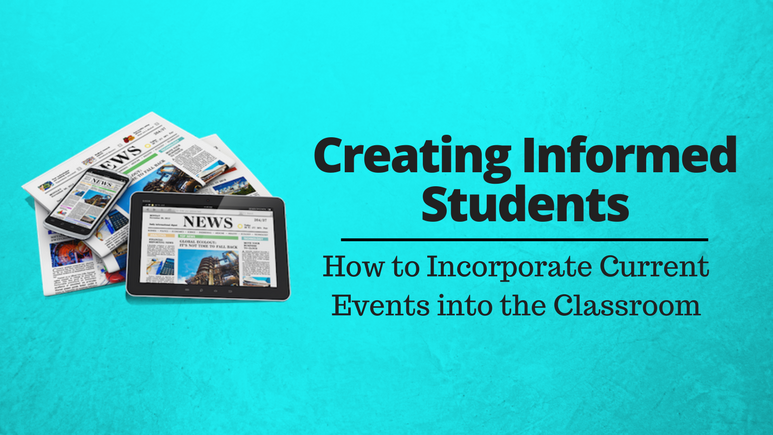
Even if you haven’t sat down with a newspaper in years, most adults will agree that it’s important to stay abreast of what’s happening in the world. Whether you get your news from TV, radio, online publications, or even social media, most of us have a time and place every day where we catch up on the news.
For students, it is far less likely that getting their daily dose of current events has become part of their routine. As teachers, we play a vital role in developing our students into avid and active consumers of news media.
The benefits of teaching current events are numerous. For one, news stories offer engaging and relevant texts that students will often want to read and question.
Studies show that students who regularly read the news develop more complex vocabularies and perform better on standardized tests. Additionally, reading current events also helps students improve their writing as they learn to emulate the clear and straightforward style of journalists.
On top of all these reasons, learning about current events makes students more educated and engaged citizens of the world. News readers are better able to show empathy towards others and develop relationships with people that are different from them. Through studying current events, students will gradually form their own opinions and learn to communicate those opinions effectively with others.
When it comes to teaching current events in your classroom, there are countless ways to get students engaged in the news. Read below for some of our favorite resources and activities.
Analyze visuals
Using photojournalism is a great way to engage even the most reluctant readers in current events. Choose a compelling image that represents or relates to an issue in the news. You can find some great pictures from the BBC’s News in Pictures or Reuters’ Editor’s Choice Pictures.
One protocol for analyzing an image that works with students of all ages is “I see, I think, I wonder”. Have students make a list or share with a partner everything they see in the image, then anything they think is happening, and finally everything they wonder about the image. By the time they finish, students’ interest will have been piqued and they’ll want to read about the event related to the image.
Learn to fact check and verify sources
Being a responsible news reader means reading critically and not believing everything you read. To practice these skills, have students complete an Internet Search Activities Course on iAcademy. Using this workbook, students will complete a series of search activities to effectively and efficiently find information on the internet. Through the investigation of teen-friendly news topics, students will learn to verify sources and evaluate the reliability of information they come across.
Use current events as a bridge to history
History teachers will tell you that the more you can make historical content relevant, the better. Whether teaching students about the effects of historical events on modern society or relating contemporary themes in the media with those seen in the past (police brutality and Apartheid, for example) students will be more invested in both lessons if they can draw clear connections between them.
Sharing opinions
Beyond just ingesting the news, we want to teach students to share their opinions and speak about what they’ve read in a polished manner. Consider having your students participate in the iAcademy course Present It!, 2E where they use modern day topics as content for making and presenting PowerPoint presentations.
If you can help your students become enthusiastic and savvy news readers in your classroom, they are more likely to carry those habits with them into adulthood.



Leave a Reply